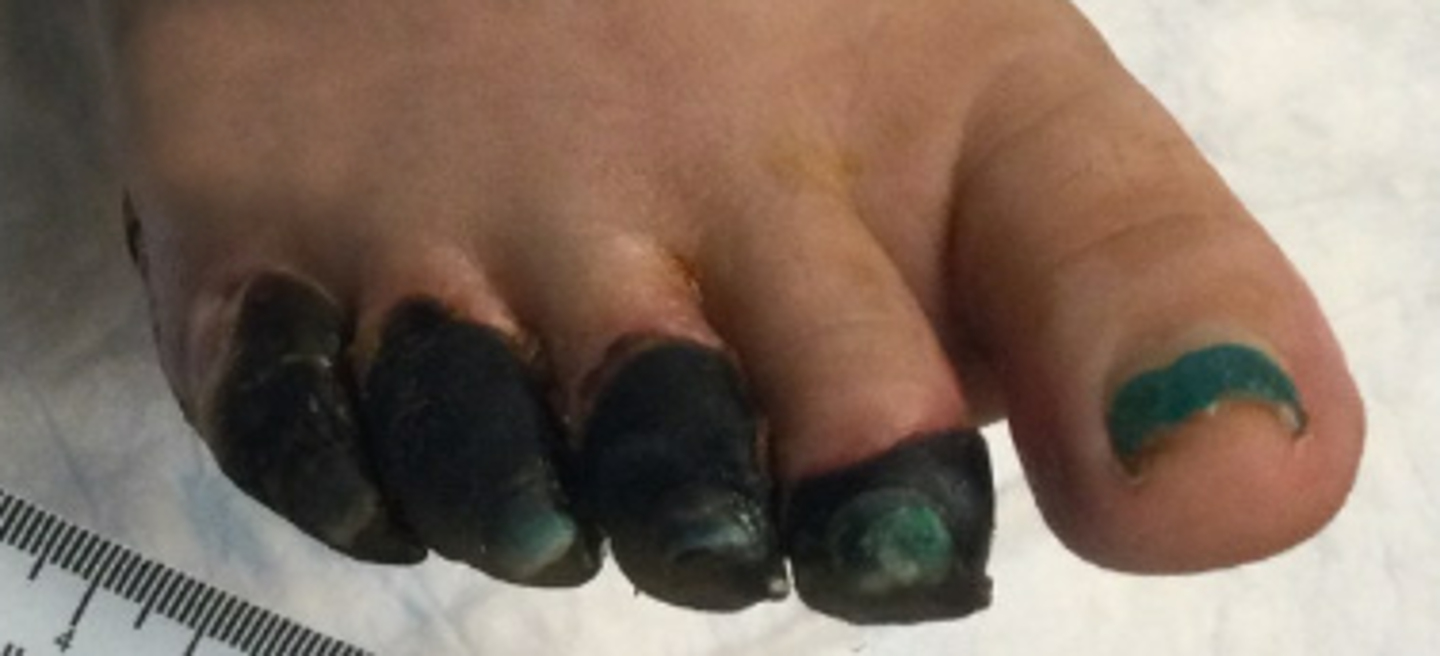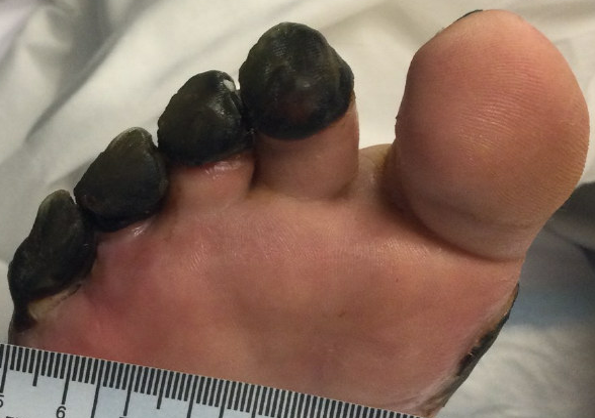Case Presentation: Levamisole is an anti-parasitic drug used in the veterinary setting. It is a frequent cocaine contaminant found in about 60-70% of samples in the United States (US) [1]. Cocaine contaminated with this substance is linked to antineutrophil cytoplasmic antibodies (ANCA) associated vasculitis [2]. As in the last decade, cocaine use worldwide has been increasing [3], levamisole/cocaine-induced vasculitis has become a clinically significant entity.35-year-old woman with a history of polysubstance use, including cocaine, presented to the hospital after found down at her house. Physical exam was significant for obtunded state and was intubated for airway protection. Skin exam was remarkable bullous and gangrenous lesions on her toes and purpuric lesions over the lateral hip and forearm. Labs significant for: WBC 11.8, BUN 52, Creatinine 7.76, CPK 31,800, CRP 13. Blood cultures were negative, and echocardiogram was negative for vegetations. Urine drug screen positive for methamphetamine, benzodiazepines, marijuana, opioids, and cocaine. Autoimmune workup was positive for cytoplasmic ANCA (c-ANCA), proteinase 3 (PR-3). CT chest without contrast left lung consolidation. For tissue diagnosis of vasculitis, kidney biopsy was obtained, but negative for ANCA-associated glomerulonephritis); pathology showed evidence of acute tubular necrosis. Due to suspicion of levamisole-contaminated cocaine-induced vasculitis, supportive care with hemodialysis for acute renal failure was started. Broad-spectrum antibiotics were started for aspiration pneumonia, and later weaned off the ventilator. Management for levamisole-induced vasculitis was mainly supportive. She was discharged home. She eventually underwent amputation of her 4 toes for gangrene. Her kidney function has returned to normal.
Discussion: Levamisole/cocaine-induced vasculitis often affects the skin with gangrenous changes involving the face and trunk [4], while our patient’s lesions were more prominent in her hands and feet. In a case series of cocaine-induced vasculitis with skin involvement and no organ involvement, most patients showed improvement with systemic corticosteroids [5]. The use of steroids is often determined by whether there is neutropenia, a common component of levamisole/cocaine-induced vasculitis, which could predispose these ill patients to fulminant infections. In another study, several patients improved without specific treatment [6], making levamisole/cocaine-induced vasculitis a possible self-limiting phenomenon.
Conclusions: Steroids remain the mainstay of treatment if there is end-organ damage due to the intense inflammatory process.


